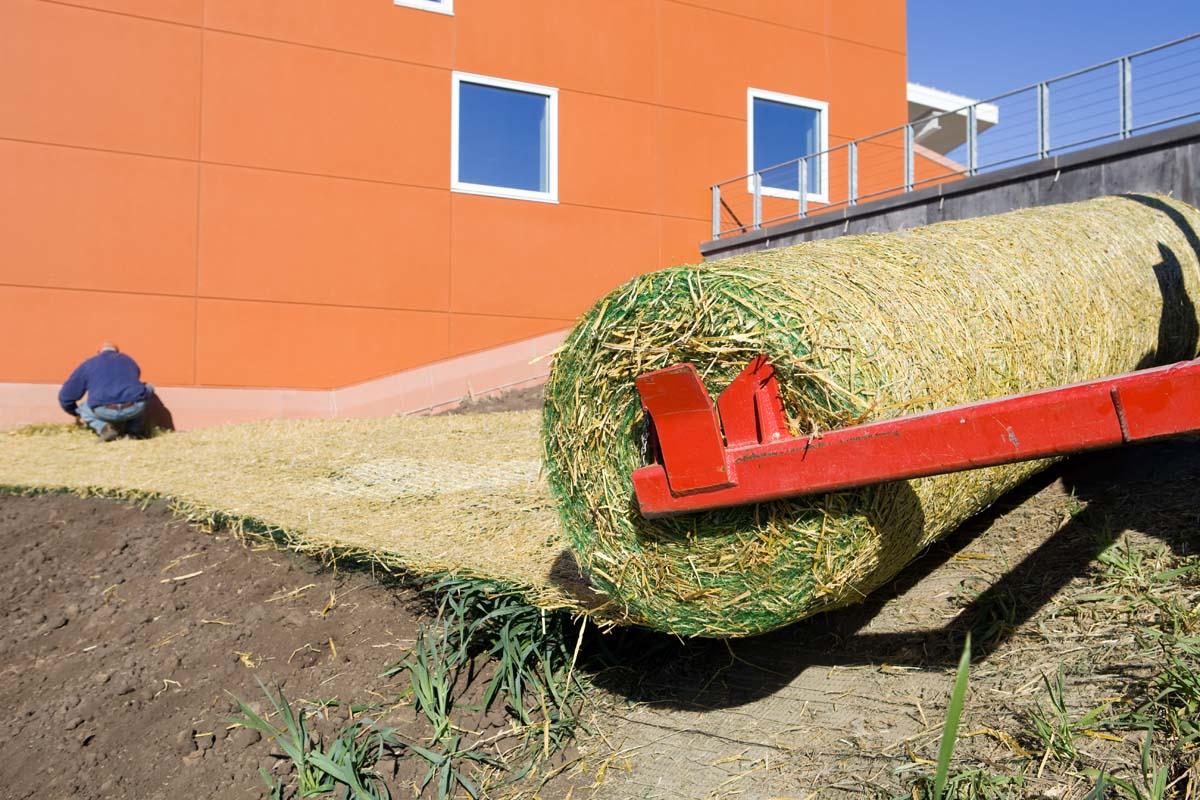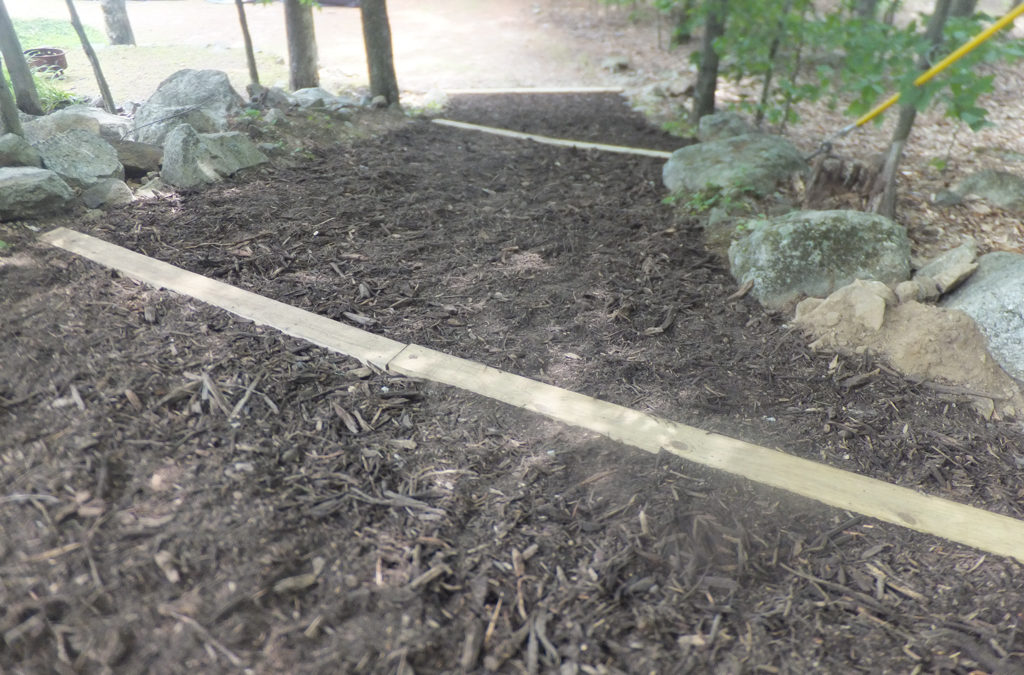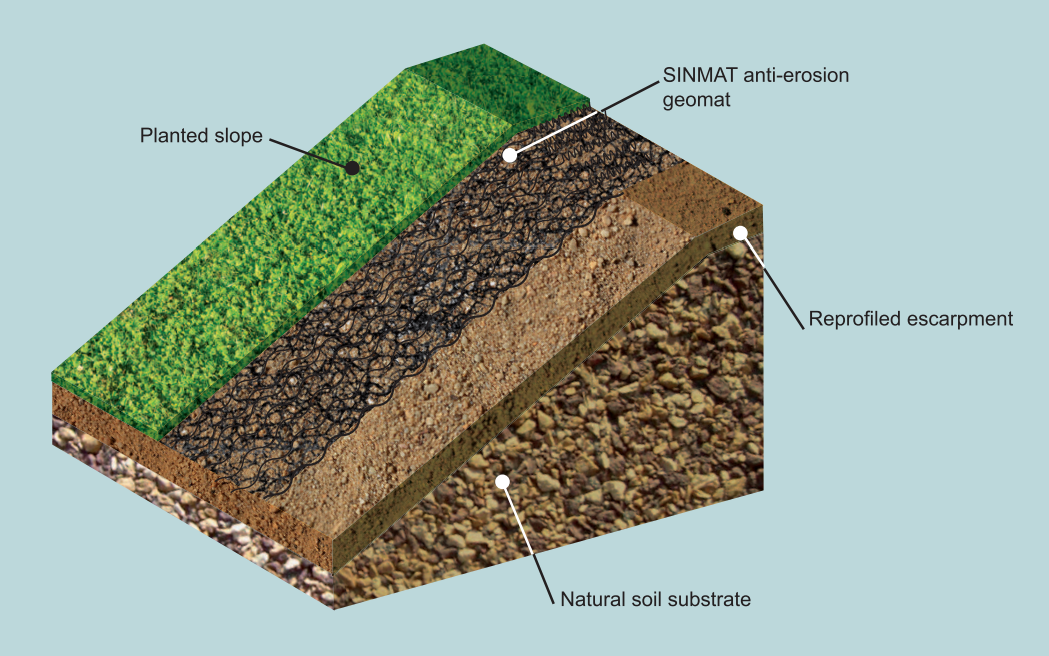Erosion Control Providers: Safeguarding the Setting
Wiki Article
Understanding the Duty of Greenery in Erosion Control
Do you want to recognize just how vegetation can play a critical role in regulating erosion? Look no more! In this article, we will discover the significance of plant life in erosion control and discuss the numerous kinds of plants that are effective in stopping dirt erosion. You will certainly also find out concerning the methods which plants aids in erosion avoidance and discover the very best techniques for implementing and preserving plant life methods for disintegration control. Allow's dig right into the world of plants and its influence on disintegration control!
The Value of Plant Life in Erosion Control
The value of vegetation in erosion control can not be overemphasized. Vegetation plays a critical role when it comes to avoiding soil disintegration. It works as a safety cover, stopping the dirt from being removed by rainwater or blown away by wind. Without greenery, the bare soil is revealed to the forces of nature, leading to erosion and the loss of valuable topsoil.Plants, such as shrubs, trees, and grasses, aids to stabilize the dirt - Memphis Erosion Control Solutions excavation. Their roots pass through deep into the ground, developing a network that holds the dirt particles with each other. This binding result decreases the likelihood of soil erosion, also throughout heavy rainfall or solid winds
Not only does plant life work as a physical barrier against erosion, but it likewise assists to reduce the circulation of water. The fallen leaves, stems, and branches of plants intercept raindrops, minimizing their effect on the dirt surface area. This allows the water to penetrate right into the dirt a lot more slowly, offering it a much better opportunity to be absorbed and minimizing the threat of disintegration.
Along with these physical advantages, plant life additionally adds to erosion control via its capacity to take in excess water. The roots of plants use up water from the soil, functioning as all-natural sponges. This helps to manage the water balance, stopping waterlogging and decreasing the threat of soil disintegration.
Sorts Of Greenery for Effective Disintegration Control
Different kinds of plant life are essential for efficient erosion control. You have a range of alternatives to select from when it comes to protecting against soil erosion. Grasses, such as Bermuda grass and fescue, are superb choices for erosion control. Their thick origin systems help support the soil and stop it from getting rid of. Shrubs, like juniper and rosemary, likewise play a significant function in disintegration control. Their deep origins hold the soil in place and supply important security versus disintegration. Trees, such as oak and ache, are another crucial part of erosion control. Their substantial origin systems aid bind the dirt with each other, minimizing the risk of erosion. In addition to these larger plants, ground cover plants like clover and ivy can also work in disintegration control. They spread out promptly and give a safety layer over the dirt, preventing erosion. By utilizing a mix of these various kinds of vegetation, you can produce a reliable and durable disintegration control system that will certainly assist preserve the stability of your dirt. Memphis Erosion Control Solutions erosion control company.
How Vegetation Assists Protect Against Dirt Disintegration
Making use of a selection of plant life alternatives can efficiently protect against dirt erosion, helping you maintain the integrity of your dirt. By planting trees, bushes, and ground cover, you develop an all-natural obstacle that shields the dirt from the destructive pressures of wind and water. Tree origins, for instance, support the dirt and best plants for front yard hold it in area, preventing erosion triggered by hefty rains or strong winds. The dense vegetation of hedges and ground cover functions as a protective layer, lowering the influence of raindrops on the soil surface and decreasing water drainage. This permits water to penetrate the soil, restoring groundwater and reducing disintegration. Additionally, the origins of plants help to boost dirt framework by separating compacted soil and enhancing its capability to maintain and absorb water. By integrating a range of vegetation alternatives, you can create a diverse and durable community that not just avoids soil disintegration however likewise sustains the development payne landscaping of valuable microorganisms and promotes general soil health and wellness. Whether you have a yard, a yard, or a huge item of land, using greenery is a reliable and basic means to preserve the stability of your soil and protect against disintegration.Applying Plants Methods for Erosion Control
Executing greenery methods for disintegration control can be an environmentally-friendly and economical option for maintaining dirt stability. By utilizing plants tactically, you can maintain inclines, reduce surface overflow, and stop erosion from occurring to begin with. One reliable technique is making use of cover crops, such as beans or lawns, which can shield the dirt from erosion by supplying ground cover and lowering the effect of raindrops. One more technique is the establishment of vegetative buffers along water bodies, which can soak up excess water, strain sediments, and reduce water flow. You can additionally utilize live fascines, which are packages of real-time cuttings that can be snugly woven together to create a barrier against moving water. These fascines can help support streambanks and decrease erosion. Furthermore, planting trees and hedges can assist in erosion control, as their origins bind the dirt with each other, producing a strong and steady structure. Overall, applying plants strategies for erosion control is a functional and environmentally friendly measure that can help preserve soil quality while also the original source supplying various other benefits for the setting.
Best Practices for Preserving Vegetation in Erosion Control Steps
To properly preserve greenery in erosion control measures, you need to on a regular basis monitor the health of the plants and promptly address any problems that arise. By doing so, you can make sure that the greenery remains strong and capable of stopping erosion. Start by checking the plants for signs of anxiety, such as wilting, discoloration, or insect infestation. If you observe any one of these symptoms, take immediate action to determine the problem and execute appropriate services. This may involve adjusting watering schedules, using fertilizers or pesticides, or removing dead or diseased plants. On a regular basis examine the soil wetness degrees to make sure that it is neither also completely dry neither as well saturated, as this can impact the health and wellness of the plants. Furthermore, frequently mow or cut the plants to maintain their preferred height and density. This will certainly not only enhance their capacity to manage disintegration yet likewise promote healthy and balanced growth. Finally, be aggressive in keeping a weed-free setting by routinely removing any type of undesirable plants that may compete with the disintegration control plants. By adhering to these best techniques, you can properly keep plant life in erosion control actions and optimize their efficiency in protecting against erosion.
Final Thought
So, currently you understand the crucial duty that plants plays in disintegration control. By picking the right kinds of plants and implementing reliable methods, you can prevent dirt disintegration and shield your land.In this short article, we will certainly discover the significance of vegetation in disintegration control and discuss the different kinds of greenery that are reliable in preventing dirt erosion. You will additionally find out regarding the ways in which greenery assists in erosion prevention and uncover the finest methods for preserving and carrying out plant life methods for disintegration control.Using a variety of plant life alternatives can properly stop dirt erosion, aiding you keep the integrity of your dirt. By integrating a range of plant life alternatives, you can develop a varied and resistant ecosystem that not only stops soil disintegration yet additionally supports the development of useful organisms and advertises overall soil health. By adhering to these best practices, you can efficiently keep greenery in erosion control steps and optimize their efficiency in avoiding disintegration.
Report this wiki page